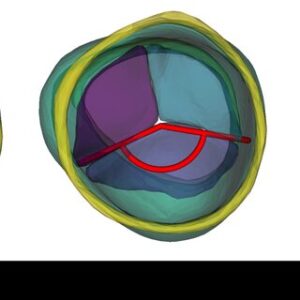Advancements in aortic valve diseases are opening doors to more effective and personalized treatment approaches in cardiac health. Thanks to newly developed drugs, biological valve solutions, and AI-supported systems, both patients’ quality of life is improving and treatment processes are becoming safer.
1. Ataciguat: The Era of Pharmacological Intervention Begins
Developed by Mayo Clinic researchers, “Ataciguat” emerges as a promising new drug for the treatment of aortic stenosis. Clinical trials show that this drug slows down aortic valve calcification by up to 70%. This makes it possible to postpone surgical intervention.

Aortic valve diseases, which threaten heart health and are generally
2. “Living Valve”: Biotechnology Offering Hope to Children
The “living valve”, developed under the leadership of renowned heart surgeon Prof. Sir Magdi Yacoub, is a biological scaffold that transforms into natural tissue over time in the body. Especially in children born with congenital heart valve diseases, this technology allows the use of growth-compatible valves, potentially eliminating the need for repeated surgeries.
3. Personalized Treatment Plan with Artificial Intelligence
With the development of an AI-supported system, the aortic valve can be analyzed in detail through 4D CT imaging. Especially in complex cases like bicuspid aortic valve, this technology allows surgeons to create personalized operation plans (arXiv, 2025).
4. TAVI vs. Surgery: Comparing Long-Term Effects
Transcatheter Aortic Valve Implantation (TAVI) is being compared with traditional open-heart surgery in terms of long-term results. New meta-analyses published in 2025 reveal that TAVI is sufficient for some patient groups; however, surgical methods provide more lasting results in younger patients.
5. Heart Ring: Minimally Invasive Solution for Aortic Insufficiency
Developed by Danish researcher Mariam Noor, the “Heart Ring” supports the heart valve through a biocompatible ring in aortic insufficiency. This solution stands out as a less risky alternative to classic surgeries.
The year 2025 marks the beginning of a new era in the management of aortic valve diseases with drug therapy, biotechnology, and artificial intelligence applications. Thanks to these innovations, both life expectancy and quality of life are increasing, while treatment processes are becoming more comfortable. Being aware of heart health and following these developments is of great importance for patients and physicians.
